The lines between counselling and coaching are becoming evermore blurred. This article asks how might coaching help your Mental Health?

Mental Health Recovery: How to return to work well.
How to return to walk and feel confident about what it will be like when you are back.

How to spend time off for a Mental Health break

You finally get the courage to recognise you need time out. Work is off the menu. Now what?
“The first days were a total blur. I rested a lot, cried a lot and got help. Gradually I introduced a bit of routine and spent time with friends which helped”.
ANON
Suddenly, after spending so long craving the escape from the workplace, you now actually have a void of empty days ahead of you. In my experience, it felt like it got worse before it got better, I simply didn’t know what to do with myself! I slept A LOT, but found sleeping all day everyday didn’t really work in the long run. But if I do nothing? I continued to worry.
Here’s a collation of the research discussions I’ve had with others who’ve been there, as well as what I (eventually!) found useful to support me in getting back on my feet:
- Firstly, if there is something more underlying that needs exploration, or maybe therapy, take some time to think about how you want to deal with it. If you ignore it now, then anything else you do will just be a sticking-plaster over the top.
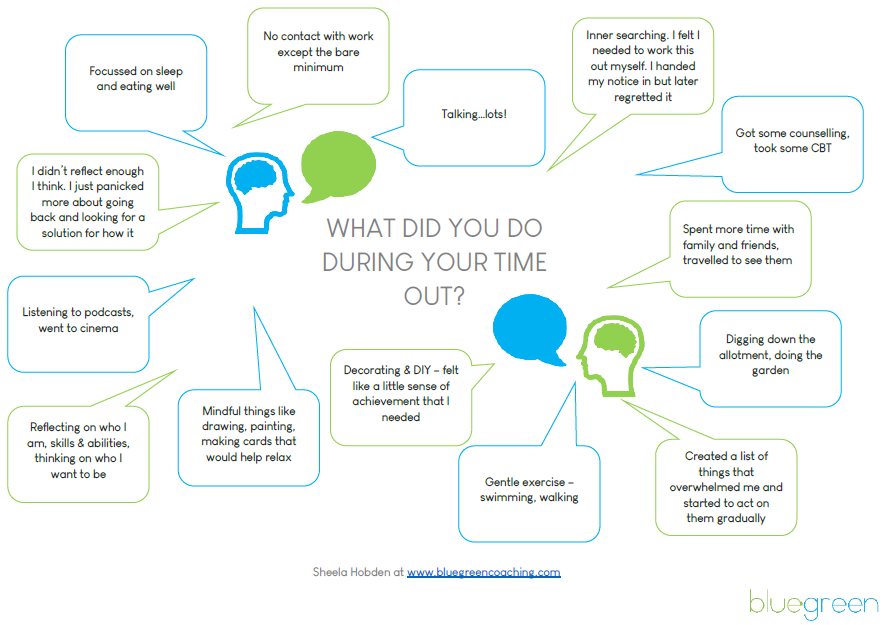
The brain loves routine, and it’s even been found that Everyday Routines Make Life More Meaningful. So, make a list of what you will do each day, with timings. This will also give you a sense of achievement when you get it all done.
What should you include on that list?
Be really specific, detailed and most importantly, be sure it is unique to you, and how you like to do things. Some ideas for what to include in your day:
- Review the core well-being factors to form the base:
- Make sure to prioritise Sleep. Get to bed at a regular time, and equally important, get up at the same time too
- Personal grooming. Brush teeth and shower – even if you don’t really feel like it. Get a haircut, cut your toenails, file your nails! Do things that make you feel tidy and good about yourself
- Connect with those you trust; in research from Matthew Liebermann, we are Wired to Connect
- Plan your food and drink; eat properly and at regular times. Keep hydrated although watch out for over reliance on alcohol, caffeine or sugar
- Keep active – where possible get outside, even if its just for a short walk each day. A quick google search will throw up all the evidence you need on the mental and physical benefits of exercise!
- Then start to build in some bigger activities:
- Do something different – book up to do something you either never had time for, or haven’t ever tried before e.g. art, pottery, sheep shearing. Learning something new means we get into a state of “flow”, which is great for a “brain cleanse”
- Begin a basic gratitude practice and mark achievements e.g. celebrate having a shower or getting out of bed if you didn’t really want to – you DID it, you took control
Some ideas to measure your progress:
- Keep a track on emotions, what the triggers are and how to shift them. Personally, I have found the Mood Meter to be a really powerful tool in helping me label emotions, as well as showing me that I can choose to take a little control and decide what I want to do about it.
- Start a super quick “TLC” journal, this could incorporate the gratitude practice above e.g. write 3 things at the end of each day for each Thanks, Learnt, Choice. These can be small things you:
- are Thankful for e.g. sunshine
- Learnt e.g. found a new footpath
- made a Choice on (even if it was which type of tea to drink!)
- If you are struggling with the current world pandemic, and wanting to understand more about the root of the emotions, you may like to review this article I wrote in March 2020 exploring Whats Behind the Pendulum of Emotions around COVID19
Once you are feeling a little more like yourself, here are some other activities/reading you might like to consider (if you haven’t already come across them already):
- Read “A vehicle for well-being”
- Take the “MOT4U” (a guided exploration of the components needed for balanced well-being)
Reading:
And if reading really is your learning modus operandi, then do have a chat with my incredible friend and fellow coach JC Bowers-Brown – Biblio Coach
This article is part of a series:
- How to Know When To Take Time Out for Mental Health
- How to have that Difficult Conversations you’ve been putting off
- What To Do With Time Out for Mental Health
- How to Return Well after a Mental Health break
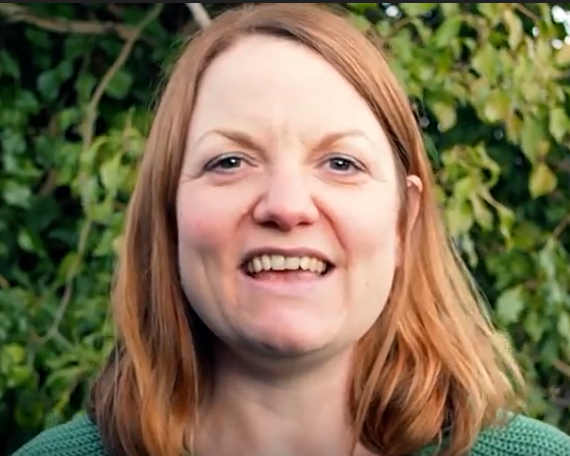
Sheela Hobden is a Coach at bluegreen Coaching. Following her own mental health battles, she now coaches individuals, runs training sessions and speaks at conferences. She has a real passion for helping medics and healthcare professionals take as much care of themselves as they do their patients in whatever life or career conundrums they face! She is also a Mentor Coach and Coach Supervisor. She has a PGCERT in Business and Personal Coaching, holds PCC member status with the ICF and is CIPD qualified. She challenges herself with ultra distance running and Ironman. Find her at www.bluegreencoaching.com or swimming in the sea, in Poole, Dorset
Get more ideas and tips by joining her newsletter tribe – sign up below!
Better still, book in to speak with her directly?

How to have that difficult conversation you’ve been putting off…
Often, the thought of a conversation, and our wild imagination about how bad it might be prevents us from having it. Here are ideas on navigating it to success for all!

When is the right time, to give your mental health a break? A guide to help you decide

My guess is that you’re here because either;
a) you know deep down you need time out and, you’re seeking external evidence to justify it or;
b) you’re experiencing some really uncomfortable emotions. Although, you can still just about do your job, function day to day, you are looking for answers on “how bad” things have to be, before taking action or;
c) maybe it’s a combination of the above.
First off, what gives me the credibility to be writing about this? I stopped, stepped back and got help. I am here to tell the tale. In a sense, I’ve been there, done it, worn the t-shirt. Its now “framed”.
It was actually pivotal in changing the way I live my life. I am proud I did something about it, and now spend a chunk of my life supporting others to look after themselves so that time out is either prevented, minimised or, doesn’t take as long to heal as I did!
For chunks of time, I felt trapped. It was what I can only describe as a pulsing blender of confusion!
The dilemma was that I didn’t feel “bad enough” to take time out.
Thinking back however, I don’t know how bad I thought I needed to be, to justify it. After all, waking in the morning with a pounding chest, crying every day before and during work (I knew the ladies’ cubicles far too intimately!) doesn’t really seem like normality. I kept telling myself that I wasn’t “that bad” though. My mission since stopping to take time out for myself to heal has been to help other people get the space and support they need sooner, so they don’t get hit as hard.
The question has always sat with me though…

At what point is it right, to take time out?
How do you decide?
If you know that if you don’t take time, things really will get out of control, the result could be that it might not be you making the decision any more. Maybe that is what suits some people better though, to have the decision made for them?
I recognise that everyone will have a different context, however I feel that, the part that is really, really hard to determine, is the right point to say “I need time out”. As I mentioned, I experienced a sense that I wasn’t “bad enough” to need time off, despite a feeling of dread every morning, crying in the shower, struggling to hold back tears at work and feeling like I’d lost control of myself. Even with all of that, I was somehow managing to go about my day to day, get my job done. I will add however, that I was exhausted at the end of every day, not wanting to see anyone, do anything or go anywhere. No-one really noticed anything was wrong, so why would anyone believe I needed any sort of break?
As I set out to write this, I wanted to check if it was just me, or if other people felt similar about this, so canvassed opinions and experiences of others in my network, and of course, found parallel stories.
So, it goes a little something like this. It feels like there are “two of you”. A big confident part of you is saying keep going, and is trampling all over the quieter voice, gently suggesting that you need to take time out.
The big “others perceptions” voice keeps winning the “argument” though…
- That’s weak, you’re a failure
- You’ll be letting everybody down
- You’ll be “leaving them in the lurch”
- It’ll go against you
- You’ll be labelled as having Mental Health “issues”
- If you stop you won’t ever go back
- You’ll lose credibility and status
And so, you “soldier on”. The voice returns. You know your GP would sign you off if you went but…
- What exactly would I say is wrong?
- How long would I be signed off for?
- How long would I actually need?
- What would they write on the note?
- Would it go on my record?
- How would I tell work?
- Will I ever get better?
The “conversation” continues…
- You’re drinking too much and eating junk but its OK, it helps you through
- You’ve stopped connecting with people, but that’s OK because you’re just busy
- You’re just tired, you cry when you’re tired
- The lack of sleep is annoying, but you can manage on a little less sleep…
- It’s only a headache, sometimes stomach ache, I’m a bit snappy, its not “THAT” bad…
The worries niggle on, keeping you crawling along…
- The workload will be even worse when I go back
- What would I say to people?
- What would people think of me…they’ll think I’m weak, a failure
- It would mark the end of my career…how will I get a job in future?
- What if I lost my job, how would I cope financially?
Until the day you find…
- You’re drinking way too much and eating mostly junk
- You’ve stopped connecting with people
- You’re crying every day, for most of the day
- You’re paralysed with paranoia
- You’re so tired you can’t do basic tasks
- You’ve totally lost empathy for patients and co-workers
- You’ve shouted and sworn at your boss/patient/client
- You break down at work
- You can’t physically get out of bed
- You are in a hospital bed
- You’re thinking it would be easier to get knocked down by a car than go to work
From the people I spoke to, the below graphic shows the symptoms they were experiencing, the final trigger that meant they took time out, along with the time they were out for.
One sign that came up for almost everyone was being tearful and crying, without being able to control it. That was closely followed by lack of sleep or insomnia.
Sleep is SO critical to our well-being (I’d go as far as survival), that it’s not surprising it’s a feature of needing time out. Its another topic for discussion on what comes first e.g. is it a lack of sleep that causes the mental health issue, or the mental health issue that causes the lack of sleep. Possibly a combination – but definitely too much to explore further here (check out an article I wrote on Sleep after reading Matthew Walkers “Why We Sleep” for more and some NHS resources here).
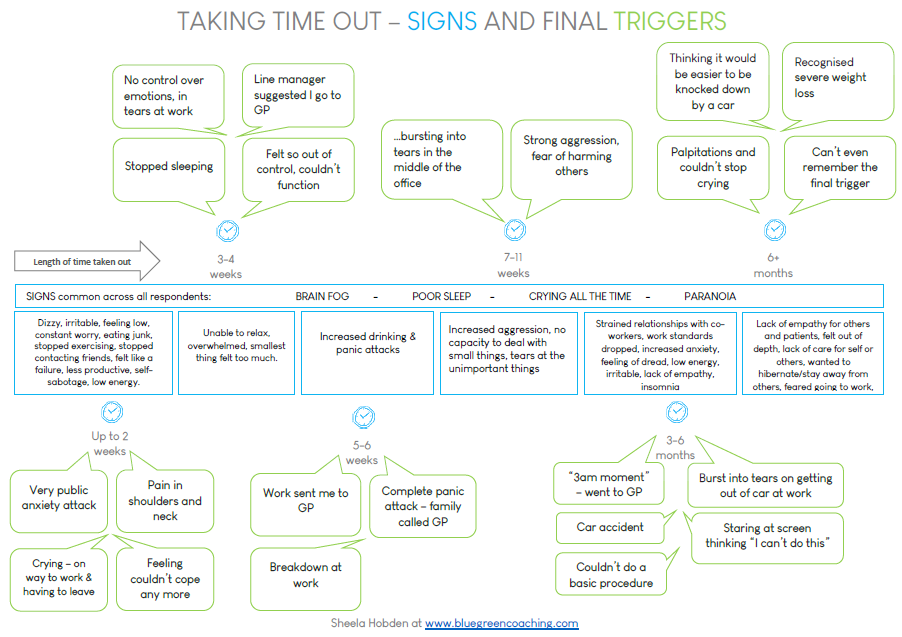
A question I asked the participants of my survey was “do you wish you’d taken time out sooner?” and the answer was YES, to the tune of 85% of people I asked.
What is actually going on though? Why do I feel so bad?
From the training, reading and research I have gathered over the years since suffering myself, I believe there are a few potential roots. One is that we may have lost connection with something or maybe never had it in the first place, and/or, our resources to deal with the lack of it, or having to handle life without it depletes us further of those resources. There are too many areas to list here in this article, but you can read more about some of them in this article.

A note on burn out
A few facts about burn out – it’s not you, its them! The Gallup survey said the top reasons for burnout are unfair treatment at work, unmanageable workload, lack of role clarity, lack of communication and support from their manager and unreasonable time pressure. So, actually if you are experiencing any of the thoughts described in this article and you can link it to any of these, you’d do right to do what you can to address these challenges.
For more on burnout, check these useful links: Maslach Burnout Inventory and article on “Workplace not people”
So, how bad does it need to be?
Now that you have seen some of the things other people experienced ahead of taking time out, what are you thinking about what you need right now?
Here are a few questions for consideration:
- Do you sense that if you don’t do something now, something very bad is likely to happen?
- How “bad” do you need to be? How much longer can you survive like this?
- What happens if you do nothing? What impact will that have on your body? Those around you?
- If someone you know, or in your team was experiencing the same things as you, what would you be suggesting?
- What is your worst fear about taking time out? If that happens, what would you do [yes this is difficult to think about, but it will at least face the fear head on]?
- How many people are worried about you right now?
- Who has already tried to help you or suggest something?
- Are you afraid to speak about your feelings for fear of breaking?
The answers to these questions will help you to build a picture of what is happening for you right now, and what might happen, depending on what you decide to do.
I remember thinking things like “I’ll take time when this project is done…” or, “I’ll be OK after my holiday” but now can see that there really never will be a “right time” to take time out, there will be what is “right for you”. So, if you draw the conclusion that you need to preserve your resources, or that if you keep on placing demands on them that they will get depleted, then it is time to take preventative action and give yourself the space you need. It is a very hard decision, however it is something you are in control of, and actually that recognition alone will be the start of your recovery process, because our sense of control is an important element of resilience, which impacts our well-being. So, to be clear, there is a choice, only YOU can make it, though it is for your future self.
The longer you leave it, the harder it will be to think clearly about what you need, and as you have seen from my research, other people start suggesting the decision for you!
If you are still unsure and need to think a bit deeper, then download my free kit to help you reach that decision.
Where my thinking originates from:
As I’ve grown the body of research on well-being, a couple of resources have become the corner stones. They are Johan Haris’ Lost Connections and Griffin and Tyrells’ Human Givens (Emotional Needs), then the practical training coming from the Wraw tool, that I am a practitioner for. All of these key works are integrated in my MOT4U concept and are integral to many of my one to one and group programmes.
💡 There are a couple of things I can offer at this point:
- Time Out Kit – use it to do some thinking on whether this is what is needed
- Take a read of “a vehicle for well-being” and consider taking your own MOT4U right now!
- Wraw Report & Coaching – an in depth psychometric measure of your resilience and impact on well-being
How did this land with you?
I really would like to hear, so do get in touch and share your experience or comment.
This article forms part of the Mental Health Time Out series:

Sheela Hobden is a Coach at bluegreen Coaching. Following her own mental health battles, she now coaches individuals, runs training sessions and speaks at conferences. She has a real passion for helping medics and healthcare professionals take as much care of themselves as they do their patients in whatever life or career conundrums they face! She is also a Mentor Coach and Coach Supervisor. She has a PGCERT in Business and Personal Coaching, holds PCC member status with the ICF and is CIPD qualified. She challenges herself with ultra distance running and Ironman. Find her at www.bluegreencoaching.com or swimming in the sea, in Poole, Dorset
Get more ideas and tips by joining her newsletter tribe – sign up below!
Better still, book in to speak with her directly?

SLEEP – What’s the big deal?
Sleep is one of the most fundamental factors in our sense of well-being. This article explores why as well as sharing tips to improve how you get yours.

COVID19: The pendulum of emotions and what do to about them
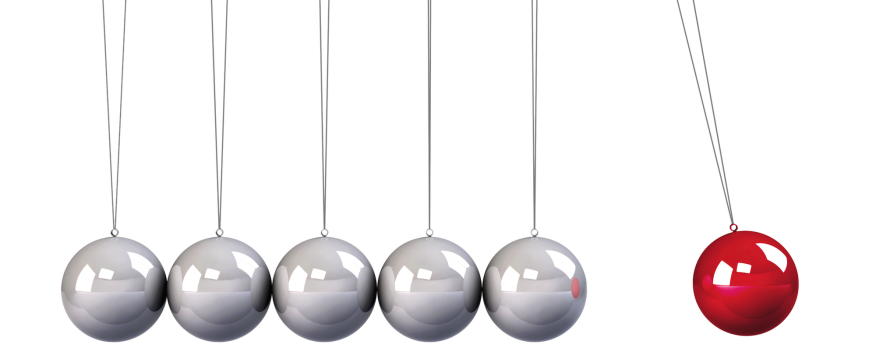
There are endless “how to” posts across all social media channels. Washing hands and social distancing are of course essential (although I would love to see more about the “why”, to help people understand the reasons). It is fact that those things are clear prevention tools we all have at our disposal. Then there are follow ups such as “how to work from home”, “how to stay motivated”, “how to keep calm”. What I felt was missing, was something about how we are actually feeling in the midst of all of this, and more importantly, why. The posts flooding out fall more into the advice category. When looking at how we humans need to look after ourselves, and establishing how to do it, the best solutions come from exploration of why we do the things we do, and more importantly, how we might do them differently…in our own way, that we choose, that we have confidence will fit into our world.

So, instead of offering a post on “how to” do self-care. I wanted to explore why we feel the way we do right now and normalise that. “It is OK, to not feel OK”! I will also share some questions to help you figure out what to do, along with a couple of free tools I found that could be useful to you.
Many people feel they are in the “same boat” . We might be having different challenges, but underneath it all, our feelings are linked to the needs we have, and how we react to certain situations. We think we are the only ones that feel this way, so we keep quiet, when actually the value is in opening up and in talking to people. So maybe its more like we are all in the same storm, with different boats to navigate it!
I started talking to people about how I felt, and said out loud, what I was worried about . Labelling the ACTUAL FEAR (I realise maybe this is fear as well as frustration) brings it out into the open, making it more visible and then we can think rationally about it (or them!). Once labelled, we can unpick it, play it out and explore the detail of our concerns. Something lifts, and we are able to see and think clearly again. I want to share, from what I know, why it is OK to feel a bit strange right now, so people can ease up on the stress and pressure they feel under.
I have a couple of pieces of research that are part of the foundations of my work in resilience and wellbeing, so I have interpreted the models in line with the current situation. I believe they offer us an explanation, and I hope that as you are reading this it will help make sense for how you are experiencing this new reality we are living in. And it is a new reality for all of us.
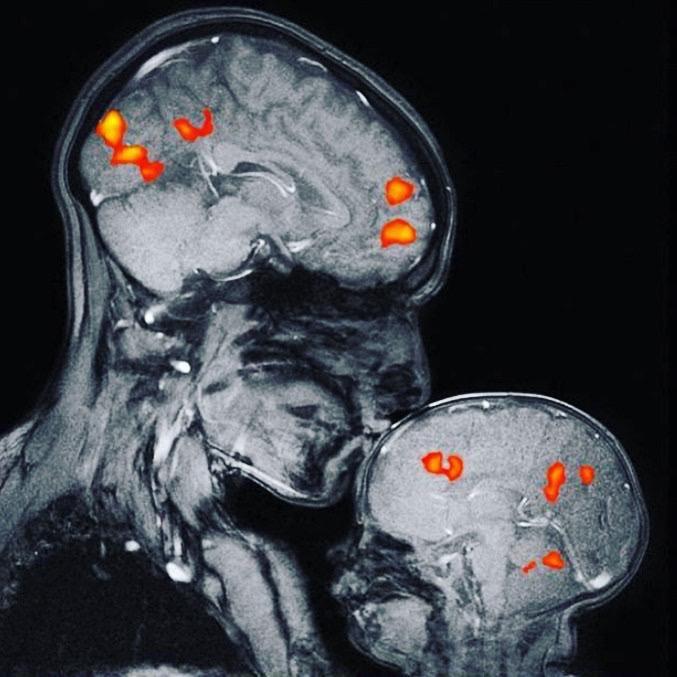
Firstly, I wanted to touch on the importance of social interaction (it underpins both models). So important is it, that the brain treats lack of it in the same panic we have when threatened with a lack of food or water (Liebermann). We go into survival mode as the fight or flight mechanism is activated from the amygdala. This give us the reason for why it’s so hard for social distancing to take place. We are wired to need that social interaction. It also shines light on why its SO important to heed the advice to stay home now, so that we are not isolated for longer than we need to be. I’m writing from the UK and we’re seeing the implications playing out already in Italy and Spain . I am very concerned for the effect on our mental health that will inevitably hit us further down the line. We are very lucky in this world to have the technology to stay connected, even if not face to face, so the best thing we can do is keep connected (virtually), and educate those that struggle to use technology, so they don’t lose out here. Bringing it back to basics, when was the last time you simply picked up the phone and called someone? Most people can use a phone!
The Human Givens Institute calls out nine emotional needs and I think all them come into play now, as do the components of David Rock’s SCARF model (neuroscience of the brain when change happens), and elements of the Wraw (Workplace resilience and wellbeing) psychometric.

Status. The definition for this is our need to have an “importance to others” or have a “status within social groupings”. For many of us, our relationship with others may have changed. As a key worker, you may be expected to keep going to work, your role has always been important, but now you feel the world’s eyes are on you. Or, suddenly we are needed to care for elderly relatives or neighbours, our relationship with them changes, or new relationships are developed. Maybe you are now working from home and the lack of contact makes you feel less important, or possibly more important if you are remotely managing a team. As simple as it may sound, what we are wearing can make a difference too. Say you go to work in a suit and with it you take on a certain persona, does sitting at home in your PJs bring the same persona? (This could be a whole other post!). Our response works two ways, we may have a threat response to that perceived lower importance, or actually, some may have a reward response. You might feel you are doing good helping someone out (signing up to NHS volunteering for example), and that triggers our brains to release dopamine, which helps us feel good.

Certainty. This one almost doesn’t need any words! I have heard “its just the not knowing that I can’t cope with” many times. David Rock describes it as “concerns about our ability to predict the future”. This again, drives the “survival” response, where we go to black and white thinking, and our brain treats it as a physical threat, so we get the racing heart, a fear of everything. A way to overcome it, is just knowing when we might get more information on the “threat”. In this situation though, we don’t even have that. We need to find a way to provide some sort of certainty for ourselves. That will look different for each person, but it could be as simple as getting an update from news or the social media you trust, and not looking again until a set point in the day, and holding onto the certainty you took at that time.
Autonomy and Control. This runs through all of the models I work with, you probably have seen some “circles of control” images on social media, outlining the things we can control and what we can’t. The more control we have, the better we feel – but its deeper than that, because its our “sense” of control. We can have an internal or an external locus of control (Rotter) – you can even take tests on line to see where yours lies. It is very easy right now to feel that there’s nothing we can do about this, and it’s beyond our control, but we absolutely can control our responses and our actions. I agree, that it is hard to think like that when in “survival” model. For example, most people “get” that the virus can be transferred via people, but not everyone recognises that it can survive on surfaces for days.
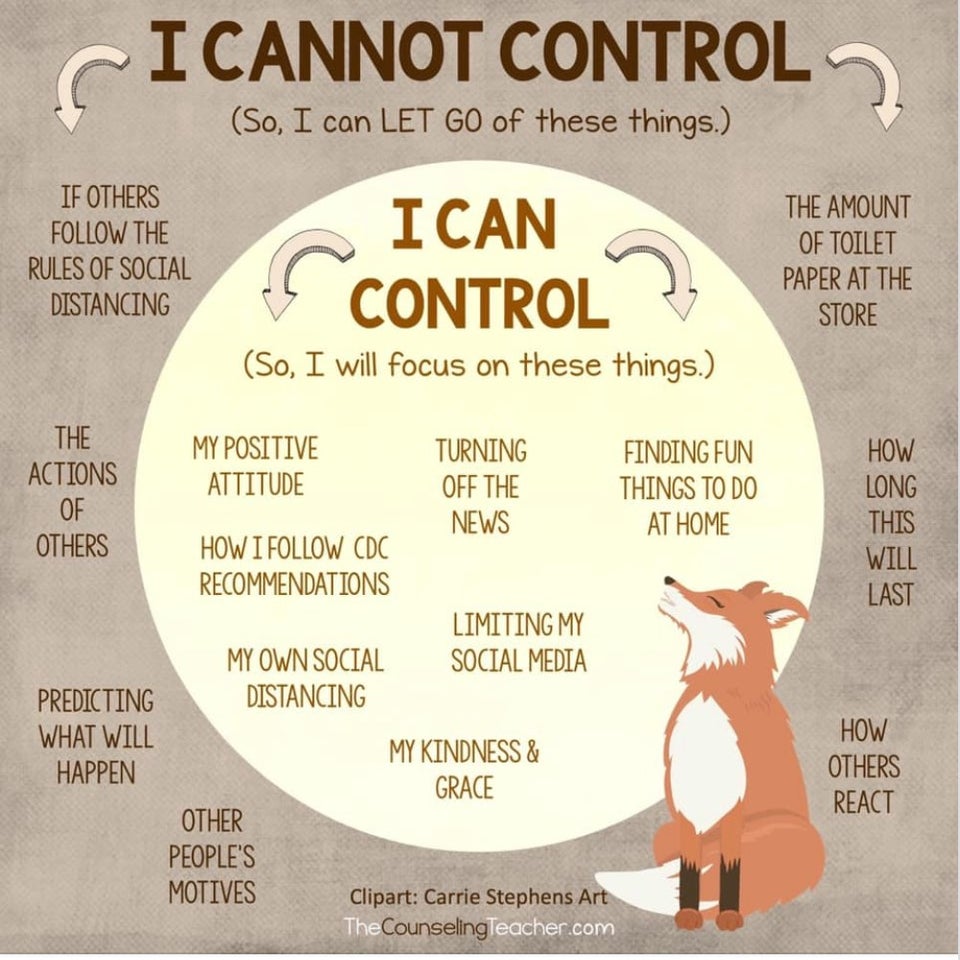
To play that out: you sit next to someone on the bus; they have just been with someone who has the virus and its on their coat; It transfers to your coat. Neither of you realise. You go to the supermarket and brush past some vegetables, it’s now on the vegetables. A kind hearted soul does the grocery shopping for their elderly neighbour and before you know it, the virus is on their food, in their body and they’re dead.
Forgive me for ending that abruptly, but it’s how it works.
The control we have here, is to choose to stay home, to choose to distance ourselves when we go shopping. To wash our hands, and our surfaces. We DO have control over the spread. This is the bit that I think is frustrating me the most, because people still aren’t adhering to this simple, life saving advice.
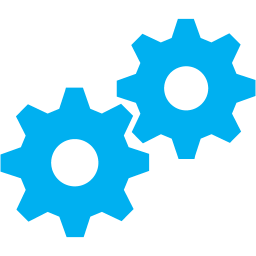
Relatedness – this is described by Rock as “a sense of safety with others”. Following on from the last section, we can’t trust anyone right now. We don’t know “where they’ve been” or “who they’ve been with”. I feel there is also a huge lack of trust in the information we are receiving. We are dealing with the situation differently to other countries and so maybe people feel we aren’t going to have it as bad. Who do we believe? Building trusted relationships is a key component of our resilience. It is definitely an area I totally overlooked during my times of trouble. I really didn’t trust anyone, which meant I didn’t open up, carrying that heavy emotion and worry around with me. I notice how much lighter things feel now when I share how I’m feeling.

Fairness is described as “fair exchanges between people”. We have seen reports of people fighting over toilet roll, panic buying more food than they could possibly eat. Where is the fairness in that? The same part of the brain is triggered into survival mode and so we go into protection mode,. We start doing things we wouldn’t normally do because we go to black and white thinking and before we know it, we also have a 9 pack of toilet roll in our trolley that we don’t really need.! By being fair to others, we can actually generate a reward response and release some better chemical into our brain, that will make us feel good (even if only for a short while, but it’s worth it).
Let’s move into some of our emotional needs. I’m not going to talk about all of them, but think these key areas are of interest: Security, Privacy, Meaning and Purpose.

Security is a big deal right now. The Human Givens definition is to have a “safe territory and an environment in which we can fully develop”. This can translate into our physical environment but also our perception of how secure we are. Right now, we don’t know where IS safe, we could pick the virus up anywhere, from anyone, its invisibility really does mean that nowhere is safe. After that, we look to physical security, of income, housing, basic shelter needs for ourselves and our families. Financial concerns will be a strong worry for many. In an instant, jobs have been lost, lack of income places risk on mortgages and therefore shelter. It is very easy to project worries into the future, a time that has not actually happened yet. Taking each day by itself and being grateful for what you have right now can support a more balanced experience.

Privacy. We all have a need to time alone to reflect and consolidate. Individually this will be different amounts of time, however we all need “some”. Maybe you have suddenly found yourself with a houseful of people because children are off school, or students are back from university and you’re not getting your own space. It could be that you normally commute and that time alone in the car or on the tube provided you with your privacy. Now, forced to work from home, that space has gone. You may be feeling frustrated, but not realised what has changed to generate these feelings. I have spoken to a few people who have recognised this, and built time into their days to allow for this.
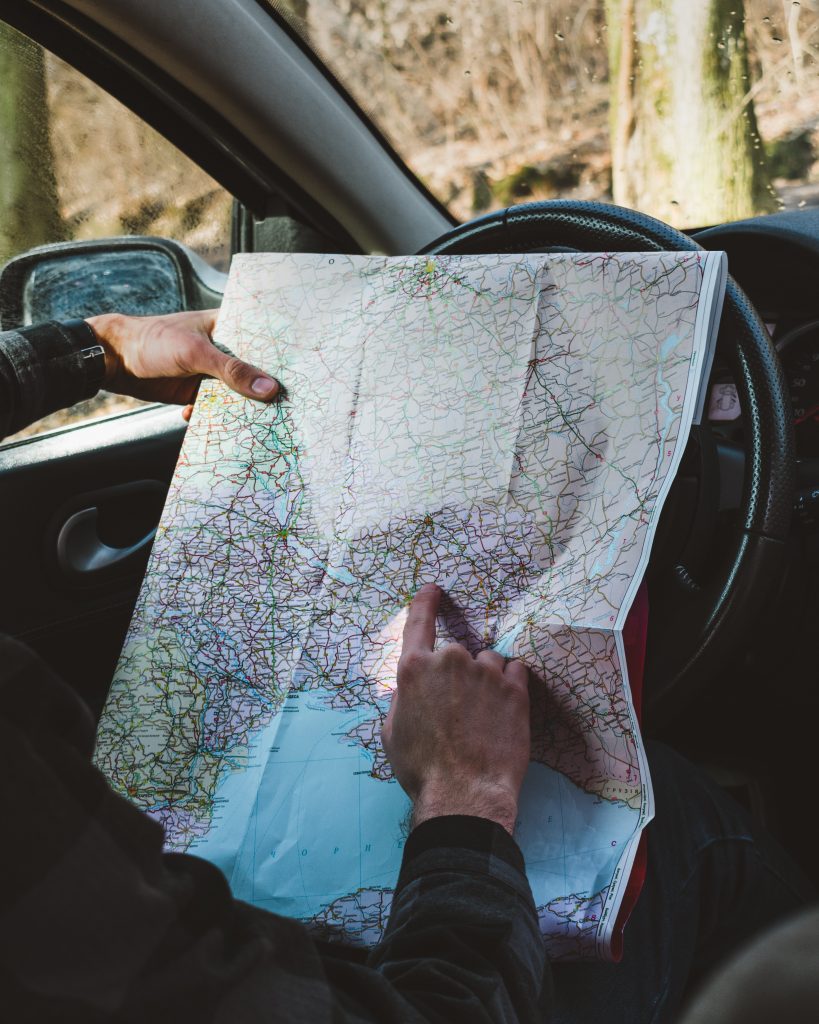
Meaning and Purpose. One thing I have been finding uncomfortable is keeping focussed on anything related to the future. With so many events cancelled, it feels like nothing is happening and it makes me feel like curling under the duvet until “it’s all over”. I think it’s because we simply don’t know whats going on right now and its hard to work towards something when you don’t know what the outcome even might look like. It’s like getting into the car and driving round and round in circles. Even if we thought we knew the destination, it changes, or we get new information about how to get there. I decided that my “destination” would be the next news briefing, so I set myself targets and things to do from the end of each briefing, to the time of the next. I can than factor any new information into my plans for the next 24 hours.
Finally, from the Wraw tool. Most areas have already been covered, but a couple might bring up some ideas on how to cope
In the Energy pillar, we talk about boundaries. This covers the separation between work and home, as well as taking breaks during the day. If you are a key worker, the chances are you are so busy boundaries are getting compromised, your passion to serve others your priority. Working from home means these boundaries can easily get blurred and restrictions on leaving the house make it harder to take a break. In either situation you are likely feeling exhausted. Setting some really small boundaries will support your energy here.
Positive Framing. One of the tools in our resilient “toolbox” is to look at things positively, so we can see things in a proportionate way. With so many unknowns, it is very hard to do this, and we feel uncomfortable with that. Seeking out positive news stories can really help revive this skill, for example, hearing that the special hospital in China has now closed due to there not being enough new cases and that the daily death toll in Italy has finally slowed. Still really tough times, but the positive elements do support our ability to see a glimmer of hope on the other side of all this.
I’ve been exploring all of this as I made sense of my own feelings and emotions, so I will share a little of these here. You may completely resonate, with them or you may be having a completely different experience. For example, I’m pretty sure it will be significantly different for someone on the frontline of all of this…
Here’s my experience:
I’ve been swinging like a pendulum. My mind is confused. My stomach is lurching. I feel trapped in the here and now. I feel helpless, despite making various offers of help and sticking to advice about social distancing and now, staying home.
I honestly don’t actually have fear right now, it is frustration. Here in the UK, we can see how other countries are suffering, what measures they have had to take to contain the virus, yet it feels like, as a country, we are wandering along blindly, like lemmings, head on, into the disaster. My brain just cannot compute when people talk about future events and sign off mails with “enjoy the sun”.
I feel rage at the lack of sensitivity. It is not their fault, of course people are trying to remain positive, yet it sends the message that “its OK to carry on as normal”, when it really is NOT. Of course I want to enjoy the sun, but that could be at the expense of someone else’s life, so I will forgo that sun today.
I’ve been trying to write for a few days now, and each time I come back to it, I change the start, based on the new reality of this surreal situation. Right now, we are not even close to how bad it potentially will be. Watching the news or scrolling social media, with its stern tone, language, gestures, I start wondering if the world will end tomorrow and yet I look outside and people seem oblivious.
I really believe we are heading for a disaster, and it seems that because we can’t “see” it, it’s easy for people to believe it won’t happen. I’m staying in, adhering to advice. Scenes of empty supermarket shelves just don’t feel helpful. I honestly think we need to see full intensive care units or doctors in despair. It may sound morbid but I have a sense that is the only way people might believe what is really happening.
People say “don’t panic”, it’s more helpful to turn this into “please prepare”. We need to convert “worry” into “contingency planning”. We need to know how bad things could get to give urgency to the need to make plans. Telling people not to panic is OK, but what do they do instead because “carrying on” is not a way forward either. We MUST do things differently.
The virus is carried on clothes and hair (not just coughs and sneezes) and THIS is why it is SO important we do not come into contact with people, and spread the virus accidentally. It survives on surfaces too. Staying home reduces the number of people and surfaces we come into contact with, so in turn reduces the risk of the spread.
It WILL hurt IF/WHEN we go into full lockdown, but I honestly believe the earlier we do it, the lower that pain will be. It really is what we NEED to do not only to save lives but to protect the physical and mental health of those who are on the frontline. The longer we leave it, the harder it will be for them to manage this crisis on limited resources.
Now you have some insight into why you feel the way you do, instead of me listing suggestions to help you get through, I will leave you with a few questions, to help you figure out a way forward that will work for you, as an individual:
– If I don’t feel OK, who could help me?

– If I do feel OK, who in my network might not? Who needs my help?
– What do I want to be saying about all of this, in 3 months time?
The references I made in this article can be accessed here:
- Liebermann book overview
- SCARF Model – David Rock
- Human Givens – Take the Emotional Needs Audit
- Rotter – Take the Locus of Control check
- Wraw – Contact Sheela at bluegreen Coaching direct, to get an individual report
NOTE: This article was written in March 2020.

Sheela Hobden is a Coach at bluegreen Coaching. Following her own mental health battles, she now coaches individuals, runs training sessions and speaks at conferences. She has a real passion for helping medics and healthcare professionals take as much care of themselves as they do their patients in whatever life or career conundrums they face! She is also a Mentor Coach and Coach Supervisor. She has a PGCERT in Business and Personal Coaching, holds PCC member status with the ICF and is CIPD qualified. She challenges herself with ultra distance running and Ironman. Find her at www.bluegreencoaching.com or swimming in the sea, in Poole, Dorset
Get more ideas and tips by joining her newsletter tribe – sign up below!
Better still, book in to speak with her directly?

How to talk about whats going on for you. Experience the “vehicle” for well-being…
I’ve struggled for a long time, being able to talk openly about how I feel, under the “wellbeing” umbrella. I’m not talking spas, yoga and smoothies, in fact, I get very frustrated when that is all that seems to be listed in the wellbeing section of a publication. I’m talking the meaty mind stuff, as well as body and soul.
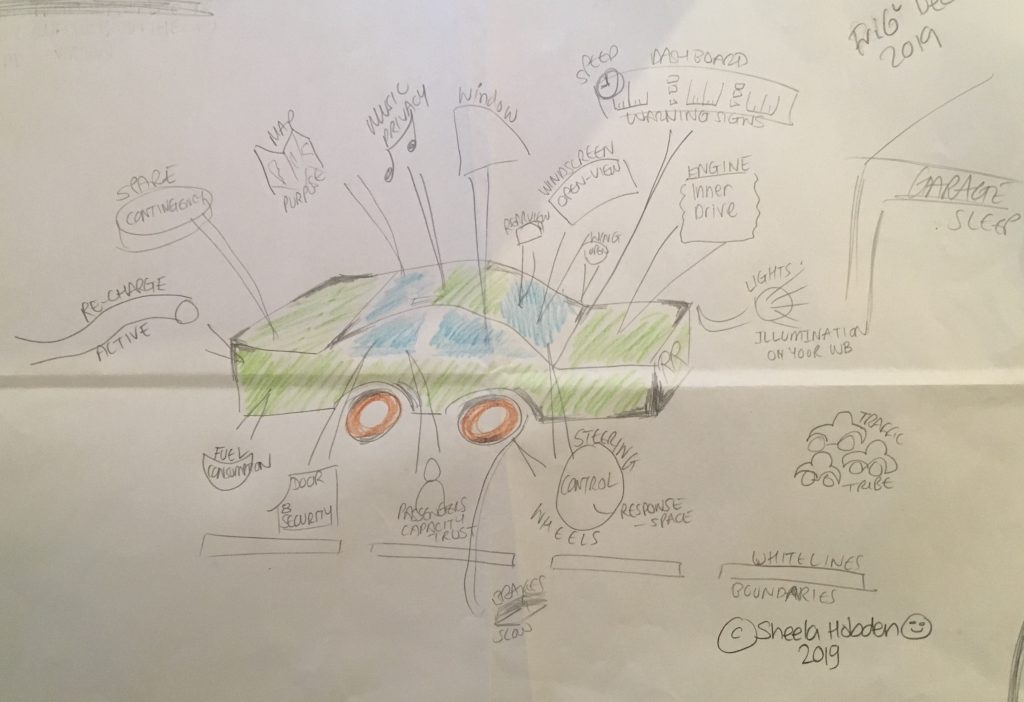
People have long felt uncomfortable talking, or even thinking about their mind, body and soul. Unlike physical, tangible things. It’s been a long time coming, but I’ve created something that’s made it easy for everyone to relate to and talk about, and want to grow the concept.
Imagine whole groups of people, in families or organisations, talking, sharing and getting help early, in the same simple way they do for their cars.
I’ve mapped everything I have learnt and now know (although I am sure there is more!) about wellbeing and resilience (another word I’d rather change…to bounceability!) to the parts of a CAR! Now, I know this will divide my readers, those that love the beauty of the machine, and those that just, need it for A to B.
Please hang on in there as I do believe either party will “get it”!
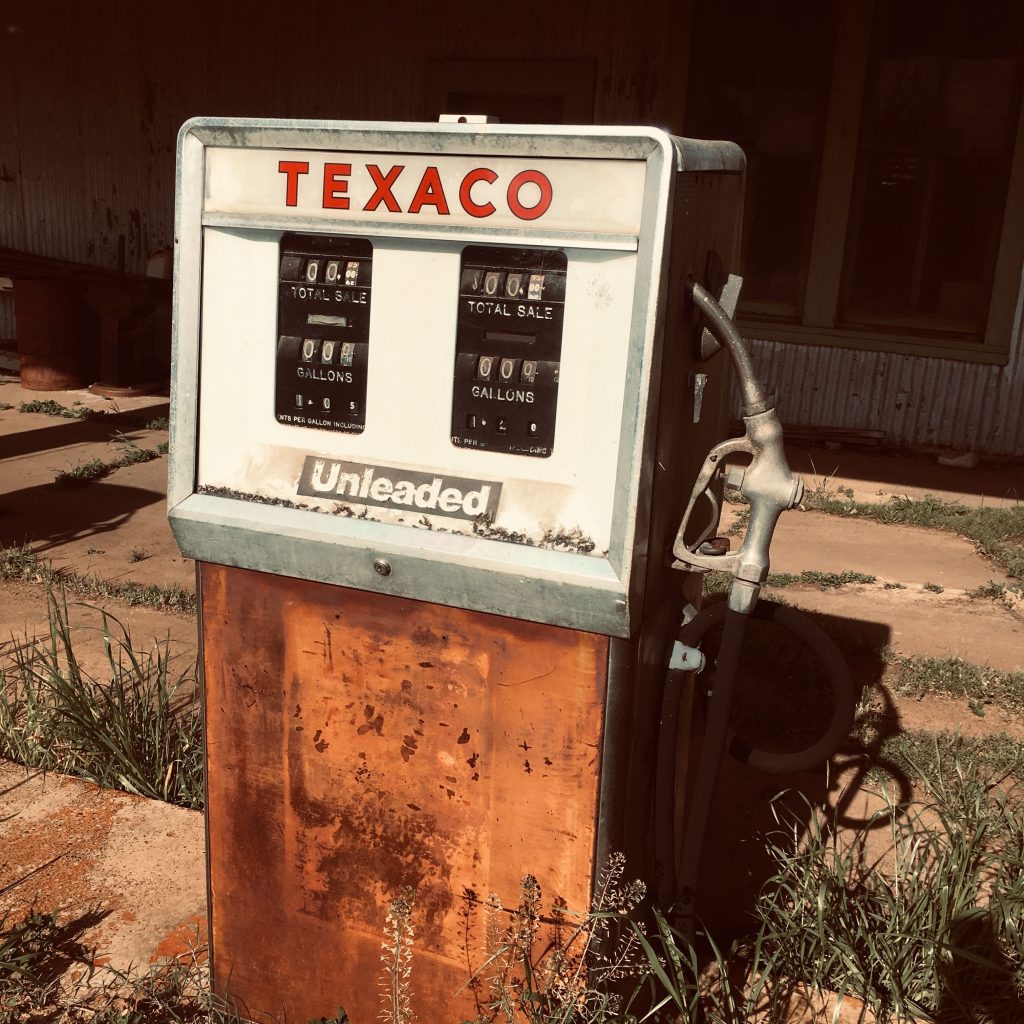
Fuel. Cars are normally restricted to one type of fuel, with which they perform. A petrol car will not function if filled with diesel. We do not make “excuses” for why we are putting diesel into our petrol car. However, we can make up the most delightful stories to tell ourselves when we are munching that extra mince pie, or opening another bottle of wine. The tricky thing for us is that we can still operate on different fuel, but the difference is between operation and performance. What do you know about the fuel that best serves you?
💡 TRY THIS:
Take a week to record what you are eating, and how you feel during the various activities you undertake – What patterns can you see? What shifts do you want to make?
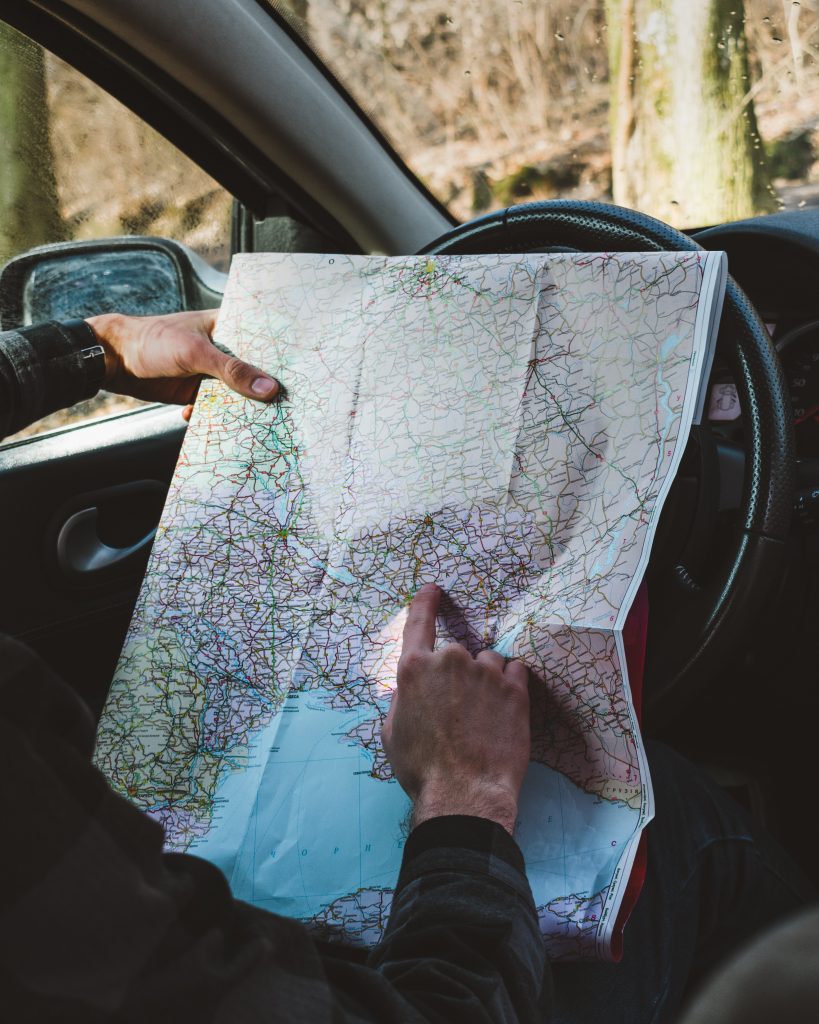
Map. Sat Nav has made it so easy for us to get to places without having to do any thinking. We plug in where we want to go and “job done”. If only that were the same in life, we didn’t have to navigate past roadblocks, traffic or coming back from wrong turns. The useful thing about Sat Nav is it re-routes us so we still get to our “goal”. We could take a leaf out of that book, bounce back faster when we don’t get what we want straight away, or the path is not so obvious. We all need a sense of purpose, a direction to head in. We simply wouldn’t get in the car and drive aimlessly round and round! What do you know about the direction or path you are on right now?
💡 TRY THIS:
Imagine yourself 20 years from now (get really detailed about how you think, feel, act, where you are etc). Write a letter to your best friend, detailing all that you have done in the last 20 years?
Review it and consider, what do I need to do to move towards these things?
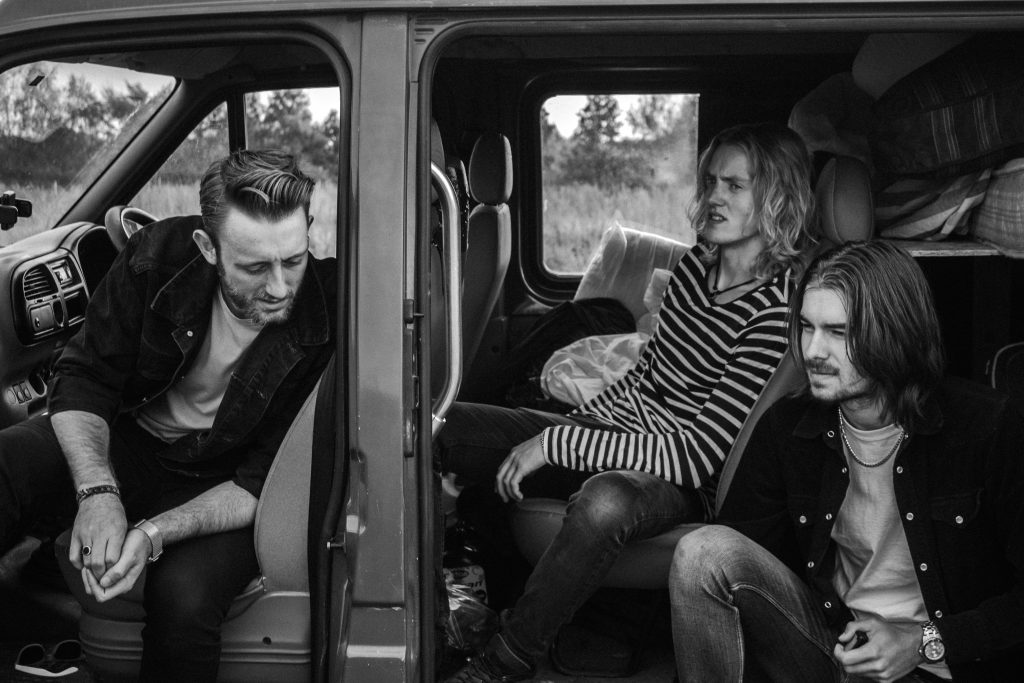
Passengers. There is generally a limit to the number of passengers in any given car. We choose who we fill those seats with. We never exceed that capacity, we know it is not safe to do so. This references a couple of points. Who is in your life right now? Do you want them as passengers? Are they fountains (give energy) or drains (hoover up your mood)!
💡 TRY THIS:
Relationship audit – write a list of all the people in your life. Assign each a role e.g. supporter, mood hoover, consultant, energy-giver (add some of your own types). Now evaluate that list – who do you need more or, and which list needs to reduce?

Engine. With a car, you turn on the engine and the car cracks on, no questions asked. The engine is not seen to the outside world. Let’s map that to us humans, and consider our engine to be our self-belief and motivation. When we try to access that, sometimes, we are faced with “you can’t do that” or “you’re not good enough” or even “I can’t be bothered”. Welcome to the world of “inner chatter”. All transient thoughts. Not real. Not true. Yet they have the power to hinder us, and stop our engine. So, how can you be more “car-like” and reduce this inner chatter? It takes time and practice, and everyone is different, but there will be a way you can do this.
💡 TRY THIS:
The more you know about who you are, the more belief you can have in yourself. Take the Character Strengths survey to highlight the top strengths you value. Click here, register for free and complete the questionnaire (takes about 20 minutes). https://www.authentichappiness.sas.upenn.edu/
I’ve talked about 4 elements here and I’m just touching the surface, there are so many more intricate parts to the car (just like the human body), and they all need to operate together to perform. Sometimes the smallest part can have the biggest impact, so it may not be obvious things that mean our sense of wellbeing is not complete. Only a full, collaborative review with a specialist will reveal the source. You heard it here first! I’m using this metaphor in many different products and developing more, to help raise awareness in a simple way.
Please do get in touch if you would like to see and hear the extended detail, or why not book yourself in for an MOT4U now?
To read more on the above elements, you might find the following useful:
Engine/self-belief: https://positivepsychology.com/self-reliance/
Fuel/body energy: https://www.nottingham.ac.uk/mhs/management/work-health-wellbeing/physical-health/diet-nutrition.aspx
Map/purpose and meaning: https://www.pursuit-of-happiness.org/history-of-happiness/viktor-frankl/
Passengers/relationships (& social interactions): https://conference.iste.org/uploads/ISTE2016/HANDOUTS/KEY_100525149/understandingtheSCARFmodel.pdf
© 2019 Sheela Hobden

Sheela Hobden is a Coach at bluegreen Coaching. Following her own mental health battles, she now coaches individuals, runs training sessions and speaks at conferences. She has a real passion for helping medics and healthcare professionals take as much care of themselves as they do their patients in whatever life or career conundrums they face! She is also a Mentor Coach and Coach Supervisor. She has a PGCERT in Business and Personal Coaching, holds PCC member status with the ICF and is CIPD qualified. She challenges herself with ultra distance running and Ironman. Find her at www.bluegreencoaching.com or swimming in the sea, in Poole, Dorset
Get more ideas and tips by joining her newsletter tribe – sign up below!
Better still, book in to speak with her directly?

Winter Fuel: How Presence is more than Presents…
I spent yesterday with my dad. We were loading the wheelbarrow with logs and stacking near the house, ready for the imminent cold snap.
This time two months ago, we weren’t even sure if we’d see his smile or hear his crazy sense of humour ever again. He’d spent 10 days in an induced coma and each time they tried to extubate him, he couldn’t breathe on his own.
To be outside with him, discussing the merits of various log shapes may seem simple, but it truly was a gift. The edgy, rational “do some work” part of my brain was shouting. But, focussing my attention on my dad and natural surroundings, it quietened.
Time with people really is something you can’t buy and you certainly can’t make up for if you miss. Our need for social connection is viewed by our brain, as important as our need for basic survival items, like food and water (Rock, 2018) so it’s not surprising that we feel so low when we feel like we are not getting enough.
This festive season, before you rush out buying gifts for those you love, what else could you do to show that love?

We all have a need to give and receive attention – each person will of course vary on quantity, but the basic need is there. It we are not getting the right balance, it can lead to a feeling that something is missing.
- I wonder what time you could give?
- Who would you give it to?
- What would they appreciate?
- And…what would really feel like a fuel injection to them?
Maybe you give enough already. In this case, actually, the gift of presence needs to be to yourself. Give yourself some time. We all have an innate emotional need for privacy. To explain, that is; spending time alone to consolidate and reflect.
If you have spent the year giving to others, whether that be through your work or personal endeavours, you may be feeling like you need to escape. This is perfectly natural. Find yourself some space – even if it is in short bursts, it will still be beneficial to your wellbeing. It is particularly important over the festive period, when houses are full of people, and relationships are prone to strain. Protect yourself and your family by taking a little time for self-care.
- What are the things you like to do on your own?
- When did you last do those?
- How much time could you carve out for yourself?
Take a look at the other emotional needs we have (as defined by the Human Givens Institute) and read more on the importance of social interaction (Rock 2008).

Sheela Hobden is a Coach at bluegreen Coaching. Following her own mental health battles, she now coaches individuals, runs training sessions and speaks at conferences. She has a real passion for helping medics and healthcare professionals take as much care of themselves as they do their patients in whatever life or career conundrums they face! She is also a Mentor Coach and Coach Supervisor. She has a PGCERT in Business and Personal Coaching, holds PCC member status with the ICF and is CIPD qualified. She challenges herself with ultra distance running and Ironman. Find her at www.bluegreencoaching.com or swimming in the sea, in Poole, Dorset
Get more ideas and tips by joining her newsletter tribe – sign up below!
Better still, book in to speak with her directly?

Out of control? Here’s how to get it back
It was a couple of my clients recently saying their big changes and shifts in thinking from coaching have been around “control” that sparked this post.

I decided to write about what I know about it as a human behaviour. I hope it’s a helpful view, and keen to hear comments.
Here’s an interesting thing about control. In a professional setting, generally, we manage to control our emotions. For example, in conversation with someone not in agreement with our suggestions, being opposed to others plans or not liking a certain attitude. We control (or manage) our responses. OK, we might have to bite our tongue, but more often than not, we remain composed.
So, how is it that, when faced with a troublesome teen, well-meaning mother or good-intentioned partner, this ability to exercise control leaves us? Emotions and language all flying in an uncontrolled manner?
So, with the people we care about MOST, we have the shortest temper. We are CHOOSING not to use that skill that we so frequently use at work?
Who is screaming – “but it just happens, something snaps inside me”? BUT, how is that situation different? How do you stop yourself in a work setting?
It is an interesting concept, and one to take a moment to think on for yourself. Tap into that insight, and you could be onto a winner at home!
What do we actually mean by control? Is the “need for control” different to a “sense of control”? If we control things too much (need), when they don’t happen as we expect them to, it can have devastating effects. From this perspective, its about the level of control we feel (sense) is needed, and being flexible when we don’t feel in control, or have choice.
Or, is it, the extent to which we BELIEVE we have control? and as in the above example, who the control is placed on? Where is the focus of that? Internal, or external?
In a queue of traffic, there are generally two types of driver. The one that keeps within a millimetre of the car in front determined not to let anyone in. They’re sure it will impact their time to destination. Any incident not to their favour on this journey is likely to result in high emotions, impacting mood and behaviour hours after arrival.
In the other camp, we have the more collaborative ones. The drivers who recognise that letting a car or two out of a junction or merge in turn around a breakdown, won’t affect their time too much. They conversely, arrive at their location feeling good to have helped someone out along the way.
What is the difference? Our chosen response to an external event, has changed our approach.
E+R=O (Event + Reaction/Response = Outcome)
Jamil Qureshi

The origination of that little equation comes from an event early on in Michael Phelps sporting career. Having trained for years for the Olympic swimming event, after starting the race, his goggles slipped. He CHOSE (responded) to carry on swimming for his life, regardless of his goggles having slipped out of place. He picked up a GOLD medal at the Olympics for the first time ever, and we all well know, continue to win many more to boot. Imagine what might have happened had he “reacted” and thrown in the towel? We may not even know his name!
There is always a choice on how we choose to behave and what to do, in any given circumstance.
SO, what choice do you have, that you maybe aren’t clear on ?
What control do you have over your actions, REALLY?
We could say this is about having an internal, versus an external view. When we are able to see that although we have no control over external events, but that we can control our responses to them, things feel a little more comfortable. This is defined as having an internal locus of control. It means we are internally making a choice, or choosing a response, to external events, rather then adopting a “helpless” approach. So, choosing how to respond to events, rather than feeling like they are “done to you” is a very helpful attitude to develop. It takes practice to build this muscle, but simply keeping this thought in mind goes some way to helping. Where could you practice this?
A couple of studies I found interesting were a Cambridge University study, which looked at what protects people from mental health outcomes. They found a “sense of control”, but also a “sense of meaning and purpose” (another whole topic to explore later!). I mentioned the troublesome teen earlier, and here’s another study that found that a perceived sense of control was actually protective against mental health problems in parents.
For the work that I do with people, I refer to these two key pieces of work:
- Human Givens Emotional Needs: the specific Emotional Need is “Autonomy & Control – having the volition to make responsible choices”
- WrawIndex (this is a psychometric tool measuring Workplace Resilience and its impact on Wellbeing): “Future Focus – Personal Control – Seeking and believing you have personal control over your situation”.
For more on internal/external locus of control, click here for ideas to try out.
What will you make a conscious CHOICE on today?

Sheela Hobden is a Coach at bluegreen Coaching. Following her own mental health battles, she now coaches individuals, runs training sessions and speaks at conferences. She has a real passion for helping medics and healthcare professionals take as much care of themselves as they do their patients in whatever life or career conundrums they face! She is also a Mentor Coach and Coach Supervisor. She has a PGCERT in Business and Personal Coaching, holds PCC member status with the ICF and is CIPD qualified. She challenges herself with ultra distance running and Ironman. Find her at www.bluegreencoaching.com or swimming in the sea, in Poole, Dorset
Get more ideas and tips by joining her newsletter tribe – sign up below!
Better still, book in to speak with her directly?
